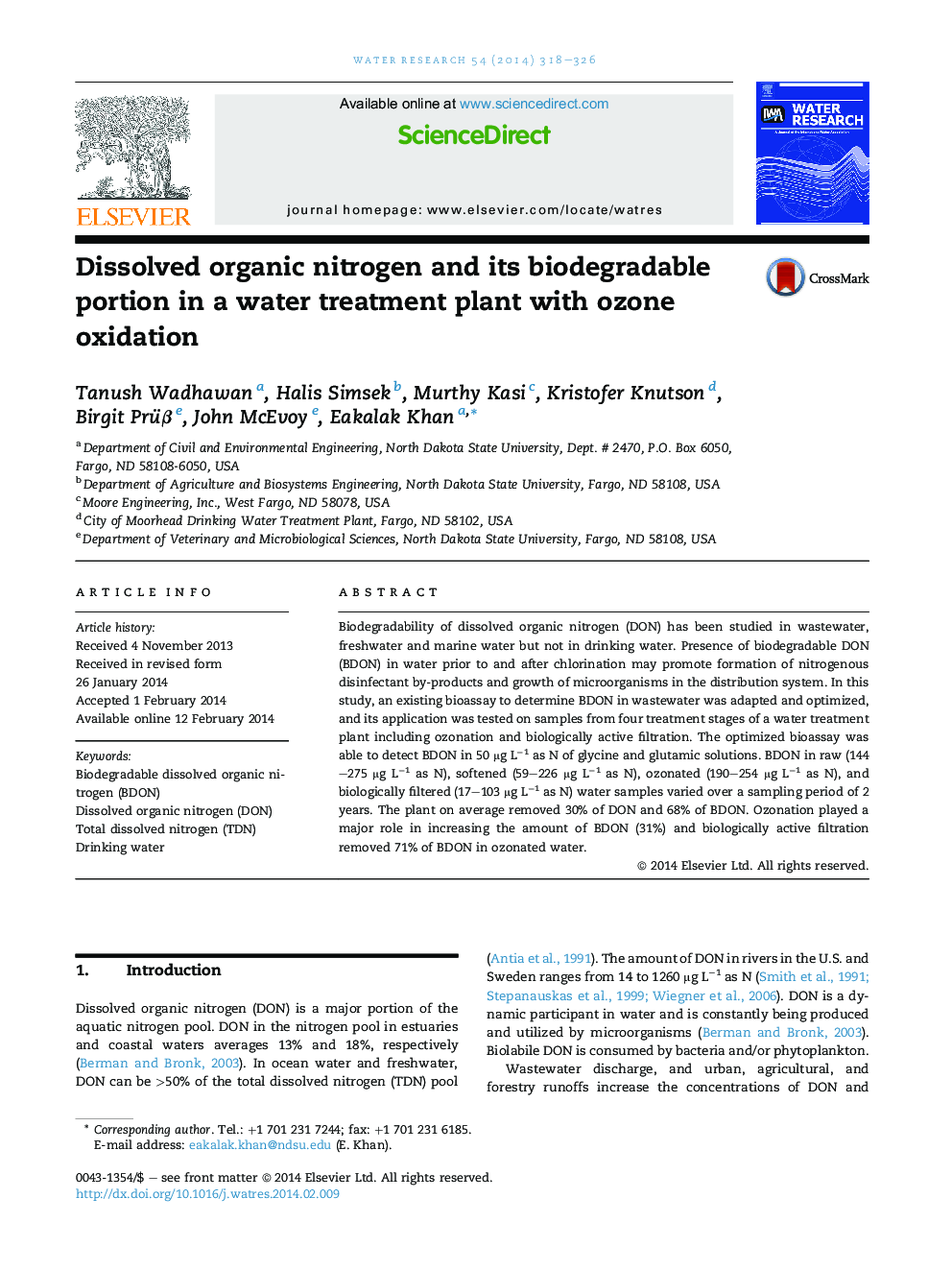| Article ID | Journal | Published Year | Pages | File Type |
|---|---|---|---|---|
| 6367095 | Water Research | 2014 | 9 Pages |
â¢Evolutions of DON and BDON through a water treatment plant were elucidated.â¢A BDON procedure for wastewater was adapted to determine BDON in water.â¢BDON in water was 17-275 μg NLâ1 and was a substantial portion of DON.â¢The studied water treatment plant removed 30% of DON and 68% of BDON.â¢Ozonation increased BDON while biologically active filtration removed BDON.
Biodegradability of dissolved organic nitrogen (DON) has been studied in wastewater, freshwater and marine water but not in drinking water. Presence of biodegradable DON (BDON) in water prior to and after chlorination may promote formation of nitrogenous disinfectant by-products and growth of microorganisms in the distribution system. In this study, an existing bioassay to determine BDON in wastewater was adapted and optimized, and its application was tested on samples from four treatment stages of a water treatment plant including ozonation and biologically active filtration. The optimized bioassay was able to detect BDON in 50 μg Lâ1 as N of glycine and glutamic solutions. BDON in raw (144-275 μg Lâ1 as N), softened (59-226 μg Lâ1 as N), ozonated (190-254 μg Lâ1 as N), and biologically filtered (17-103 μg Lâ1 as N) water samples varied over a sampling period of 2 years. The plant on average removed 30% of DON and 68% of BDON. Ozonation played a major role in increasing the amount of BDON (31%) and biologically active filtration removed 71% of BDON in ozonated water.
Graphical abstractDownload high-res image (156KB)Download full-size image
